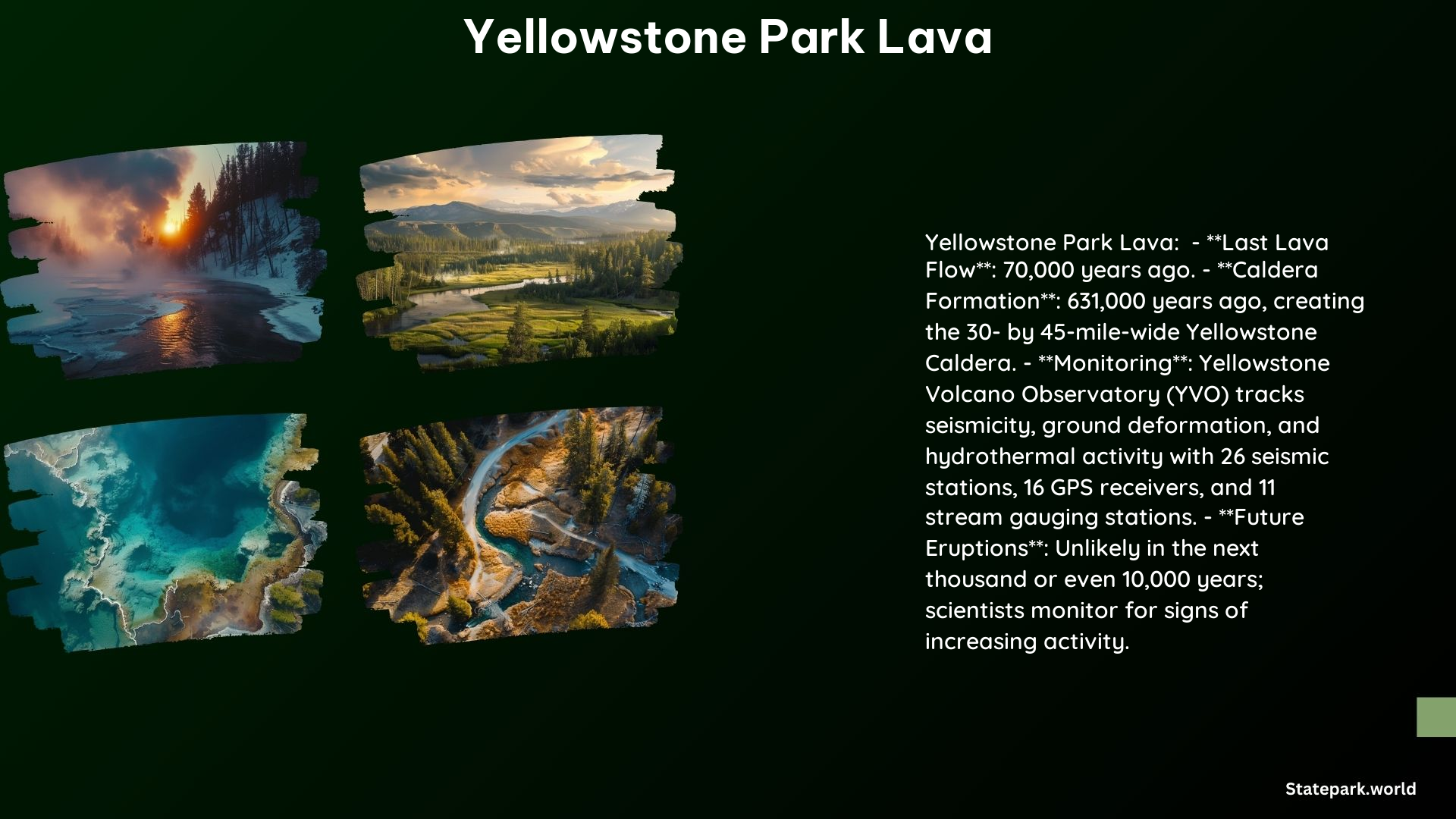Yellowstone National Park is renowned for its diverse and captivating geological features, including its volcanic history and the lava flows that have shaped the landscape over time. As a national park enthusiast, understanding the history and dynamics of these lava flows can enhance your appreciation for the park’s unique natural wonders.
History of Lava Flows in Yellowstone National Park
Yellowstone’s volcanic history is a fascinating story that spans thousands of years. The most recent lava flows in the park occurred approximately 70,000 years ago, producing relatively small and non-explosive rhyolite and basalt lava. However, the park’s most significant volcanic event was the massive eruption that occurred 631,000 years ago, which created the present-day Yellowstone Caldera, a 30- by 45-mile-wide depression.
This eruption was one of three supereruptions that have profoundly shaped the park’s geology. Yellowstone’s volcanic activity is fueled by a hotspot, a region where magma from deep within the Earth’s mantle rises to the surface, creating a trail of volcanic activity as the North American continent drifts southwest over time.
Magma Chamber and Lava Formation

Beneath Yellowstone lies a vast reservoir of hot magma, fueled by a massive plume of molten rock surging from hundreds of miles below the surface. This magma chamber is the driving force behind the park’s iconic geysers, hot springs, and other hydrothermal features. If a lava flow were to occur in Yellowstone, it would likely be of rhyolite or basalt composition and would ooze slowly over months or years, allowing time for park managers to evaluate the situation and take appropriate action to protect visitors and the surrounding area.
Monitoring and Hazards
The Yellowstone Volcano Observatory (YVO), established in 2001, closely monitors the volcanic and seismic activity in the Yellowstone region. Using a network of seismic stations, GPS receivers, and stream gauging stations, the YVO tracks changes in the park’s geologic activity, providing valuable data to help understand and anticipate potential hazards.
While a massive, catastrophic eruption is considered unlikely, smaller lava flows or hydrothermal explosions could still pose significant risks to the park and its visitors. The park’s dynamic hydrothermal features, such as the iconic Old Faithful geyser, are closely monitored for any signs of instability or changes that could indicate potential hazards.
Key Statistics and Facts
- Yellowstone averages between 1,000 and 3,000 earthquakes per year, most of which are small and barely noticeable.
- The Lava Creek Tuff, a thick volcanic debris layer, is evidence of the last major eruption and can be seen in various locations throughout the park.
- Yellowstone is classified as a supervolcano due to its ability to produce eruptions of more than 240 cubic miles of magma.
Exploring the lava flows and volcanic history of Yellowstone National Park is a fascinating and educational experience for any national park enthusiast. By understanding the park’s unique geology and the potential hazards associated with its volcanic activity, visitors can gain a deeper appreciation for the dynamic and ever-changing landscape that makes Yellowstone such a remarkable and awe-inspiring destination.
References:
- USGS.gov. (2023, November 6). Lava Flows and Associated Hazards at Yellowstone. Retrieved from https://www.usgs.gov/volcanoes/yellowstone/science/lava-flows-and-associated-hazards-yellowstone
- National Geographic Education. (2024, April 29). When a Sleeping Giant Awakes. Retrieved from https://education.nationalgeographic.org/resource/when-sleeping-giant-awakes/
- Vox. (2014, September 5). What would happen if the Yellowstone supervolcano actually erupted? Retrieved from https://www.vox.com/2014/9/5/6108169/yellowstone-supervolcano-eruption
- National Park Service. (2021, August 31). Volcano – Yellowstone National Park. Retrieved from https://www.nps.gov/yell/learn/nature/volcano.htm
- Wikipedia. (n.d.). Yellowstone Caldera. Retrieved from https://en.wikipedia.org/wiki/Yellowstone_Caldera
